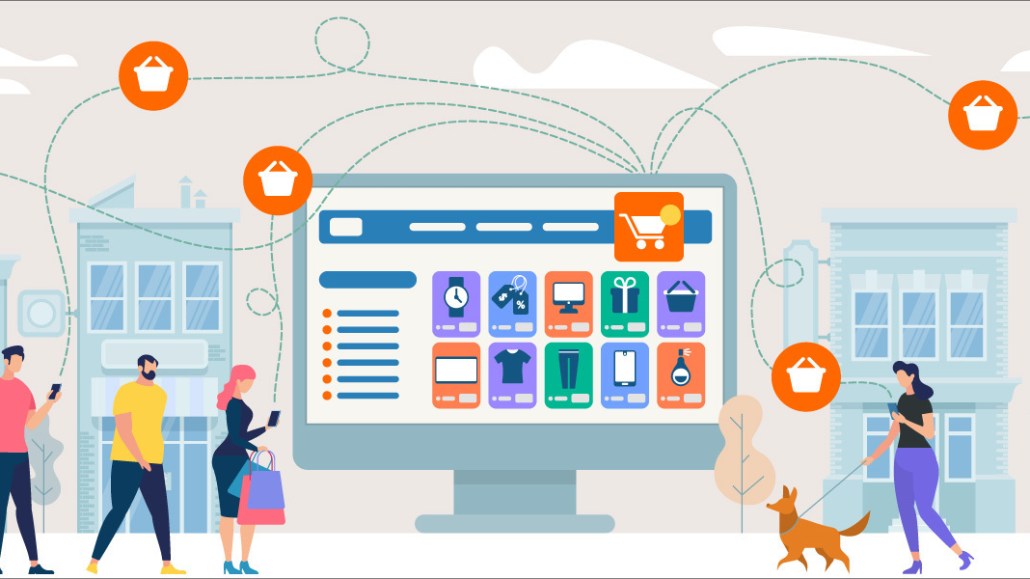Save 50% on a 3-month Digiday+ membership. Ends Dec 12.
The race to frictionless consumer journeys is expanding beyond marketplaces

Compressing consumers’ path-to-purchase is the holy grail of advertising and marketing. When Jeff Bezos authored 1-Click in 2011, advertisers began to realize that in some cases — especially for consumables — awareness, consideration and purchase can all happen in seconds. Since then the rise of e-commerce marketplaces has forced a major shift in the design of the consumer journey, designed to reduce friction and increase efficiency. This trend has expanded beyond marketplaces, with important implications for all advertisers.
The arms race that Bezos initiated with 1-Click checkout is now moving upstream in the customer journey. Major media platforms such as Instagram, Facebook, Google and Pinterest are delivering near instant gratification for both planned and unplanned purchases using shoppable media. Instagram, for example, offers swipe-up or click-to-activate access to advertiser catalogs. Facebook Shop has onboarded major e-commerce platforms, such as Shopify, to enable small businesses to feature products for direct purchase via in-feed ads. Pinterest offers shoppable visual content with LENS, a visual search tool, to locate similar products, compare features and prices and buy directly from advertiser catalogs within the app. Google is enabling search ads with buy-now functionality whereby storefronts are featured within the app for merchant-direct purchases.
Shoppable media is vying to serve as a silver bullet for advertisers seeking to achieve shorter decision journeys and rapid ROI, while still maintaining control over their brand, a major priority in marketplace selling (and often left unsecured).
The benefits for advertisers who reduce friction in the consumer journey are numerous, and they include the following outcomes.
Shoppable media plugs massive leaks in the consumer journey
In-app shoppable environments are an opportunity to minimize the heavy yield loss otherwise incurred at every stage along the decision journey. If user ad-click behaviors — from site visits to purchases — are any indication of representative stages along the purchase journey, more than 95% of users typically do not make it from one stage to the next if required to switch apps, sites or sessions. Reviving the communications with users once lost along the journey and reminding them to reconsider is costly, requiring data and ad frequency. It’s also annoying for consumers who are no longer interested, or those concerned with data privacy.
Tapping into walled garden data is critical for advertisers
The ability to capture first-party customer data is perhaps the most significant benefit for advertisers. While shoppable ads are popular for small-ticket items under $150, they present all advertisers with unique opportunities to initiate direct-to-customer relationships. They also help to expand the current customer file, generate awareness and drive repeat purchases and greater customer lifetime-value. Even though e-commerce marketplaces such as Amazon were pioneers in streamlining the on-platform purchase journey for millions of consumers, advertisers’ ability to capture customer data remains severely limited on e-commerce platforms that prefer to own customer relationships, including Amazon and comparable marketplaces like Walmart and Target.
Shoppable rebalances the reach and frequency equation
Shoppable ads also challenge the prevalent media practice of high-frequency ad retargeting after initial exposure as a means of improving return on ad spending (ROAS). They prove the power of intuitive user experiences that integrate media, merchandising and content to eliminate the steps that add friction to the customer journey and elongate the buying process. This substantially reduces the need for reminder messaging. Shoppable ads enable advertisers to place more focus on incremental reach and less focus on frequency. The net result is better market share growth and greater success in hitting ROI targets.
The open web is next
The evolution of shorter consumer journeys will continue on the open web, overhauling publisher partnerships and programmatic media. This is where high-involvement, big ticket purchases will begin to benefit from the shortened journey as they crisscross the broader web, requiring customers to directly interact with many parts of the advertiser’s business value chain. Meeting the new high bar of customer expectations will require advertisers to redesign their internal and partner content, tools and services into a unified path that aligns organically with consumers’ decision-making. It will also require advertisers to rethink the role that media and advertising play in generating better insights into the incremental value of each stage in the customer journey, and to consider the immense benefits that stem from shortening the buying cycle.
More from Digiday

‘We just did the math’: The new baseline for ad tech transparency
Ad execs said the industry is shifting toward a renewed transparency push driven as much by day-to-day operational pressure as by principle.

How Criteo is turning LLMs into its next big advertising channel
Through experiments with LLMs, the outfit wants to position its commerce media footprint to help power product discovery in the AI-era.

WPP estimates commerce media spending to overtake TV this year
Agency giant projects spending on ad networks operated by retailers, travel operators and financial services companies will exceed TV investment by end of this year.





